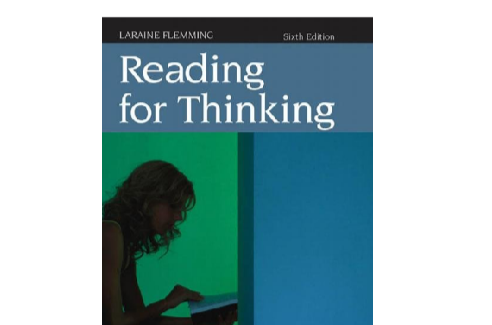《英語閱讀與理解》是一本圖書,作者是araine E. Flemming。該書旨在提高讀者的英語閱讀與理解能力,有助於讀者熟練使用英語。
基本介紹
- 書名:英語閱讀與理解
- 又名:Reading for Thinking
- 作者:Laraine E. Flemming
- 圖書分類:外語
圖書信息,內容簡介,目錄,
圖書信息
中文名: 英語閱讀與理解
原名: Reading for Thinking
作者: Laraine E. Flemming
圖書分類: 外語
內容簡介
在英語"聽、說、讀、寫"四大技能中,閱讀占有很重要的地位,無論是日常工作和學習中要大量地閱讀很多英文資料,還是考試中遇到越來越多的閱讀理解題,這些都對我們的閱讀能力提出了很高的要求。通常,要熟練使用英語,每年至少要保證有200萬字的輸入(閱讀)和4萬字的輸出(寫作)。
Incorporating a wealth of practice exercises and high-interest readings, READING FOR THINKING focuses on improving reading skills at the "micro-level" and moving on to the "macro-level." Over half of the book is devoted to evaluating, drawing inferences, and identifying tone, bias, and purpose. The Sixth Edition continues to focus on developing students' comprehension and critical-thinking skills. Flemming uses a carefully designed sequence of explanations and exercises that allows students to approach critical reading as a natural extension of essential comprehension skills, rather than a discrete set of new strategies. Armed with the ability to both analyze and evaluate a writer's work, students apply those twin intellectual tools to Flemming's trademark high-interest readings to determine purpose, analyze evidence, detect bias, recognize tone, and compare opposing points of view. Vocabulary quizzes have been added to each chapter.
目錄
Chapter 1 Becoming a Successful Student 1
Use SQ3R to Complete Textbook Assignments 2
S: Survey 3
Q:Question 4
R-1: Read 4
R-2: Recall 5
R-3: Review 5
Underline and Annotate While Reading 11
Symbols for Underlining and Annotating 13
Paraphrase to Monitor Comprehension and Encourage
Remembering 16
Paraphrasing in Marginal Notes 18
Pointers on Paraphrasing While Reading 19
Becoming Adept at Writing Summaries 21
Use the World Wide Web to Build Background Knowledge 29
Selecting a Site for Background Knowledge 32
Pointers on Selecting Sites for Background Knowledge 35
Test 1: Using SQ3R 38
Test 2: Recognizing an Accurate Paraphrase 42
Test 3: Recognizing an Accurate Paraphrase 45
Test 4: Summarizing Chapter Sections 49
Test 5: Paraphrasing with Accuracy 52
Chapter 2 Developing an Academic Vocabulary 54
Identify the Specialized Vocabulary of Each Course 55
Learn the Words That Appear and Reappear 55
Use Context to Build Detailed Definitions 55
Check the Glossary 56
Pay Attention to Words Followed by Definitions 56
Record All Words Set Off from the Text 57

